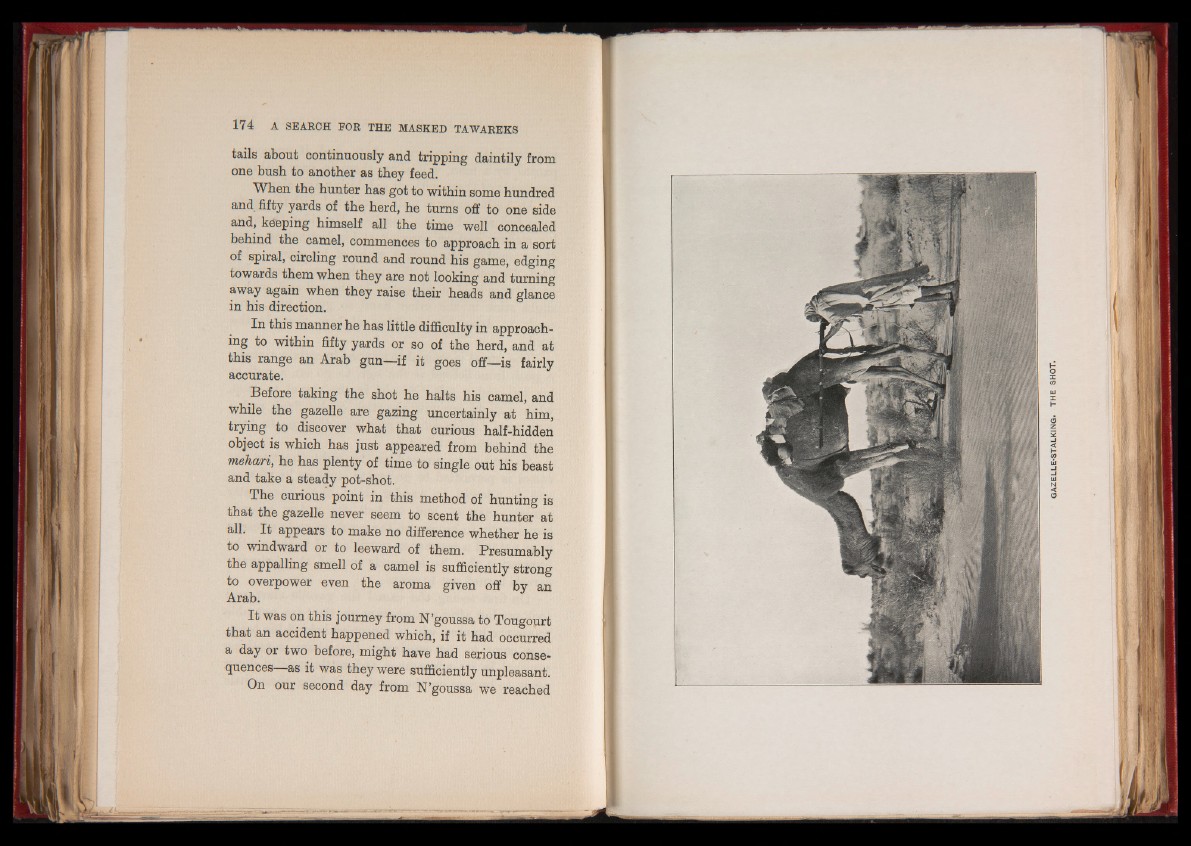
tails about continuously and tripping daintily from
one bush to another as they feed.
When the hunter has got to within some hundred
and fifty yards of the herd, he turns off to one side
and, keeping himself all the time well concealed
behind the camel, commences to approach in a sort
of spiral, circling round and round his game, edging
towards them when they are not looking and turning
away again when they raise their heads and glance
in his direction.
In this manner he has little difficulty in approaching
to within fifty yards or so of the herd, and at
this range an Arab gun—if it goes off—is fairly
accurate.
Before taking the shot he halts his camel, and
while the gazelle are gazing uncertainly at him,
trying to discover what that curious half-hidden
object is which has just appeared from behind the
mehari, he has plenty of time to single out his beast
and take a steady pot-shot.
The curious point in this method of hunting is
that the gazelle never seem to scent the hunter at
all. It appears to make no difference whether he is
to windward or to leeward of them. Presumably
the appalling smell of a camel is sufficiently strong
to overpower even the aroma given off by an
Arab.
It was on this journey from N’goussa to Tougourt
that an accident happened which, if it had occurred
a day or two before, might have had serious consequences
as it was they were sufficiently unpleasant.
On our second day from N’goussa we reached